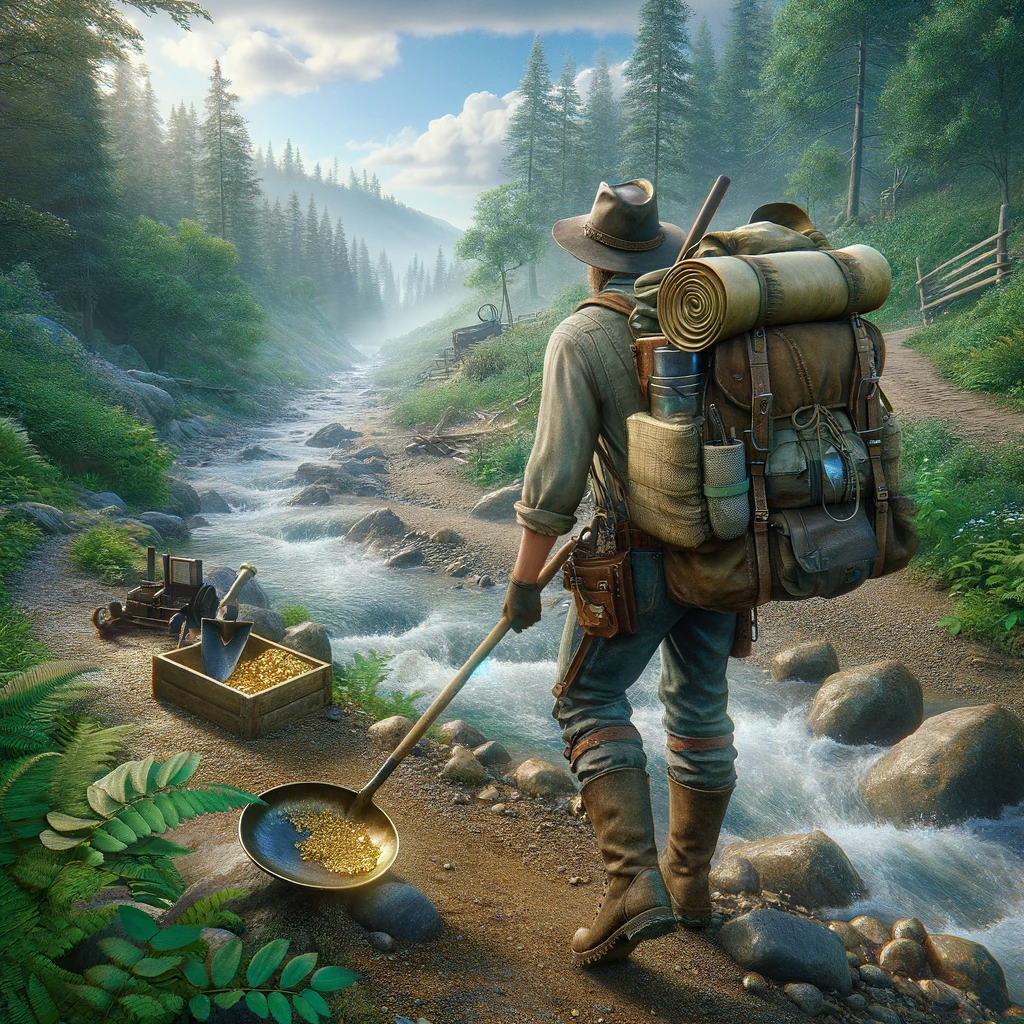The Allure of Gold Prospecting: A Timeless Hobby for the Adventurous
For centuries, the thrill of the hunt has been at the heart of human endeavor. Whether it's searching for rare spices in the jungle or treasure in ancient ruins, the pursuit of something valuable and elusive is a fundamental aspect of human nature. In recent years, gold prospecting has experienced a resurgence as a popular hobby among those seeking adventure, relaxation, and a connection to the great outdoors.
What is Gold Prospecting?
Gold prospecting, also known as placer mining or stream prospecting, involves searching for gold in its natural state – often hidden within rivers, streams, and creeks. The process typically begins with panning, where water is poured over the bottom of a shallow pan to separate the heavier gold particles from the lighter sediment. This ancient technique has been employed by prospectors for centuries, requiring patience, persistence, and an understanding of the intricacies of geology.
Benefits of Gold Prospecting as a Hobby
Gold prospecting offers numerous benefits for enthusiasts, ranging from physical activity and mental stimulation to social connections and personal growth.
- Physical Activity: Gold prospecting requires walking long distances, lifting heavy equipment, and wading through water. This combination of exercise and outdoor exploration provides an excellent way to stay physically fit while enjoying the great outdoors.
- Mental Stimulation: The thrill of the hunt and the uncertainty of finding gold can be mentally stimulating. Prospectors must consider factors like geology, weather patterns, and water currents, making this a hobby that challenges both body and mind.
- Social Connections: Gold prospecting often involves joining clubs or groups with fellow enthusiasts, providing opportunities for socializing, sharing knowledge, and learning from experienced prospectors.
- Personal Growth: The patience, persistence, and problem-solving required in gold prospecting can lead to personal growth and self-discovery. As individuals overcome challenges and achieve small victories, they develop a sense of confidence and self-reliance.
Discovering the World of Gold Prospecting
Gold prospecting is more than just a hobby – it's an adventure that can transport you back in time. By exploring the natural world and uncovering hidden secrets, prospectors develop a deeper appreciation for geology, ecology, and the environment.
- Understanding Geology: As you study the rocks and streams where gold often occurs, you'll gain insight into the geological processes that shape our planet.
- Connecting with Nature: Gold prospecting provides an opportunity to connect with nature in a way that few other hobbies do. From observing wildlife to appreciating the beauty of natural landscapes, this hobby fosters a sense of awe and respect for the environment.
Getting Started
Whether you're a seasoned outdoorsman or just looking for a new adventure, gold prospecting is accessible to anyone with the right mindset and equipment. Here's how to get started:
- Research Local Streams: Look for areas with known gold deposits or streams where gold has been found in the past.
- Invest in Essential Equipment: Begin with basic tools like a gold pan, shovel, and water filter.
- Join a Prospecting Community: Connect with local clubs or online forums to learn from experienced prospectors and gain access to resources and information.
In conclusion, gold prospecting is more than just a hobby – it's an adventure that combines physical activity, mental stimulation, social connections, and personal growth. Whether you're seeking a new challenge or simply looking for a way to connect with nature, gold prospecting offers countless rewards for those willing to take the plunge.






